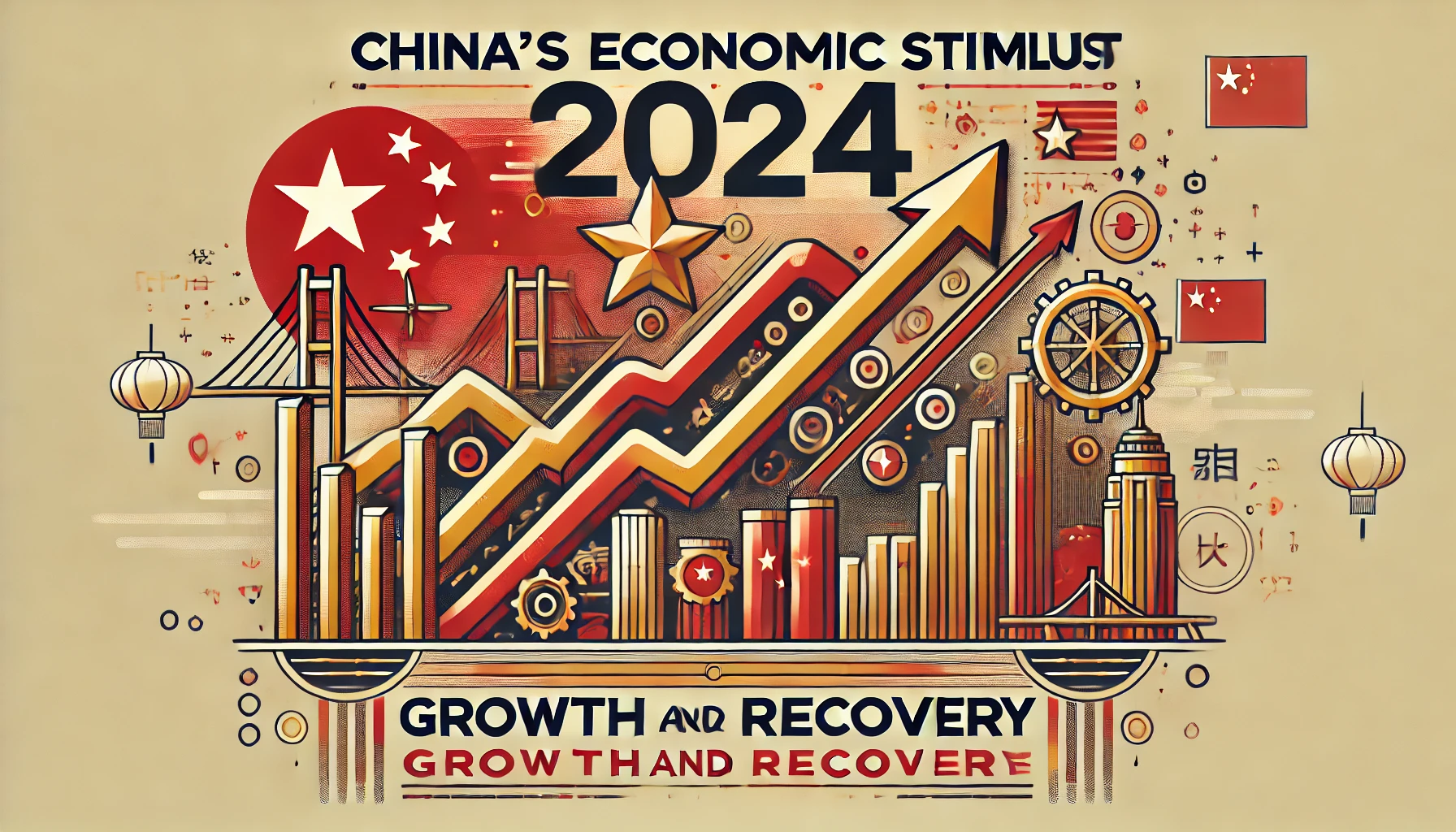China Stimulus Calls Are Growing Louder — Inside and Outside the Country
As global economic uncertainty continues, the call for a more aggressive China economic stimulus is growing both within and outside of the country. China, the world’s second-largest economy, has faced significant challenges in recent years, from trade tensions to slowing domestic demand and the ongoing effects of the global pandemic. Many are now looking to the Chinese government to implement stronger fiscal policies and expand infrastructure stimulus to spur growth and ensure a swift economic recovery. In this blog, we’ll explore China’s stimulus package, its potential impact on the global economy, and what to expect from China’s monetary policy in 2024.
China’s Economic Stimulus: A Growing Demand
As China’s economic growth shows signs of slowing, both internal and external voices are calling for more substantial government intervention. Analysts argue that a more comprehensive China economic stimulus could help stabilize the country’s GDP and boost economic recovery following disruptions caused by trade wars and COVID-19.
The Role of China’s Stimulus Package
China’s approach to economic stimulus has historically focused on large-scale government spending, particularly in areas like infrastructure, to drive growth. In 2024, the government is expected to expand its current stimulus package to provide additional support to struggling sectors and increase public investment. Current measures include:
- Infrastructure Projects: Investment in China’s infrastructure stimulus aims to modernize the country’s transport, energy, and technology sectors. These efforts not only boost short-term growth but also improve long-term productivity(Supply Chain World magazine).
- Financial Stimulus: China has employed various financial stimulus measures, such as lower interest rates and credit availability, to encourage investment and consumption.
- Consumer Incentives: Subsidies and rebates to promote domestic consumption, especially in industries like real estate and automotive.
However, some experts believe these measures are not enough. Calls for an even more aggressive China stimulus package are growing as economists fear that without further intervention, the country could face prolonged stagnation.
China Economic Growth 2024: What’s in Store?
Looking ahead to 2024, China’s economic growth is expected to face both opportunities and challenges. While China’s GDP forecast remains positive, various internal and external factors may impact the pace of growth. Current projections suggest that the country will grow at around 5% in 2024, though this is contingent on the success of China’s stimulus measures and government spending.
Key Factors Shaping China’s Economic Growth in 2024
Several key factors will determine the trajectory of China’s economic recovery:
- Domestic Consumption: One of the main drivers of China’s economic growth will be the strength of its domestic market. Stimulus efforts aimed at boosting consumer spending could be a deciding factor.
- Export Market Stability: With global supply chains still in flux, the health of China’s export markets, especially in the U.S. and Europe, will play a significant role in the country’s overall economic growth.
- Government Spending: China’s government spending in 2024 will likely focus on infrastructure and technological innovation, further fueling its economic recovery efforts(Global Training Center).
While 2024 holds promise for China’s GDP growth, much will depend on whether the Chinese government heeds the calls for expanded stimulus and how external factors, such as global inflation and trade dynamics, play out.
China’s Monetary Policy 2024: Easing Financial Conditions
China’s monetary policy is also a critical lever that the government is using to manage its economic performance. As the People’s Bank of China (PBOC) continues to monitor inflation, consumer confidence, and credit conditions, there’s an increasing push for looser monetary policies to support China’s economic recovery.
Easing Monetary Conditions for Growth
To sustain and amplify the effects of its stimulus package, China is expected to maintain an accommodative monetary stance throughout 2024. This includes:
- Lowering Interest Rates: To encourage borrowing and investment, the PBOC has lowered interest rates, allowing businesses to access cheaper credit.
- Increased Liquidity: The PBOC is likely to continue measures to inject liquidity into the financial system, supporting banks and businesses with necessary funding(Supply Chain World magazine).
- Support for Key Industries: Monetary policies are also being designed to support key industries, such as tech, real estate, and manufacturing, which are pivotal for China’s economic growth.
With a focus on both easing financial conditions and promoting infrastructure stimulus, China’s monetary policy in 2024 is set to play a central role in shaping the country’s economic trajectory.
Infrastructure Stimulus: The Backbone of China’s Growth
One of the most prominent features of China’s stimulus package is its focus on infrastructure. Over the years, large-scale infrastructure projects have driven China’s rapid growth, and in 2024, the government is doubling down on this approach to accelerate its economic recovery.
China’s Infrastructure Investments
Infrastructure stimulus efforts will likely focus on several key areas:
- High-Speed Rail and Transportation: Investment in China’s vast transportation network continues, with more high-speed rail and urban transport projects being rolled out.
- Green Energy: China is pushing hard to become a global leader in green energy, and this includes significant investments in wind, solar, and hydrogen energy infrastructure.
- Digital Infrastructure: As part of its long-term economic strategy, China is investing heavily in 5G networks, AI, and quantum computing technologies(Global Training Center).
The government’s emphasis on infrastructure is aimed not only at short-term job creation but also at laying the foundation for China’s economic growth in the years to come.
China’s Fiscal Policy: Balancing Growth and Debt
While calls for more aggressive China stimulus are growing, the government must also manage its fiscal responsibility. China’s fiscal policy in 2024 will likely aim to strike a balance between stimulating growth and keeping national debt in check.
Managing Fiscal Risks
China’s debt levels have risen in recent years, particularly at the local government level, where borrowing has been used to fund ambitious infrastructure projects. The challenge for policymakers in 2024 will be ensuring that stimulus spending does not exacerbate these risks while still delivering the economic support needed for China’s economic recovery.
The Importance of Government Spending
China’s government spending is central to the country’s stimulus efforts. The government’s ability to target spending in high-impact areas, such as infrastructure and consumer incentives, will determine how effective its fiscal policy is in fostering economic growth(Global Training Center).
The Road Ahead for China’s Economic Recovery
The demand for a more substantial China economic stimulus is growing, and as we move into 2024, the government’s response will have far-reaching implications for both the Chinese economy and the global market. Through expanded infrastructure stimulus, proactive monetary policies, and careful management of fiscal policy, China has the tools necessary to maintain economic growth and achieve its GDP forecast. However, much will depend on how these measures are implemented and the global economic conditions China faces in the coming year.
As the world watches how China navigates these economic challenges, it remains clear that the calls for China’s stimulus package will continue to grow, both inside and outside the country. For those interested in understanding more about economic stimulus and global market dynamics, check out additional resources at Regent Studies.
For further insights into China’s evolving fiscal and monetary policies, read this analysis from Bloomberg.



